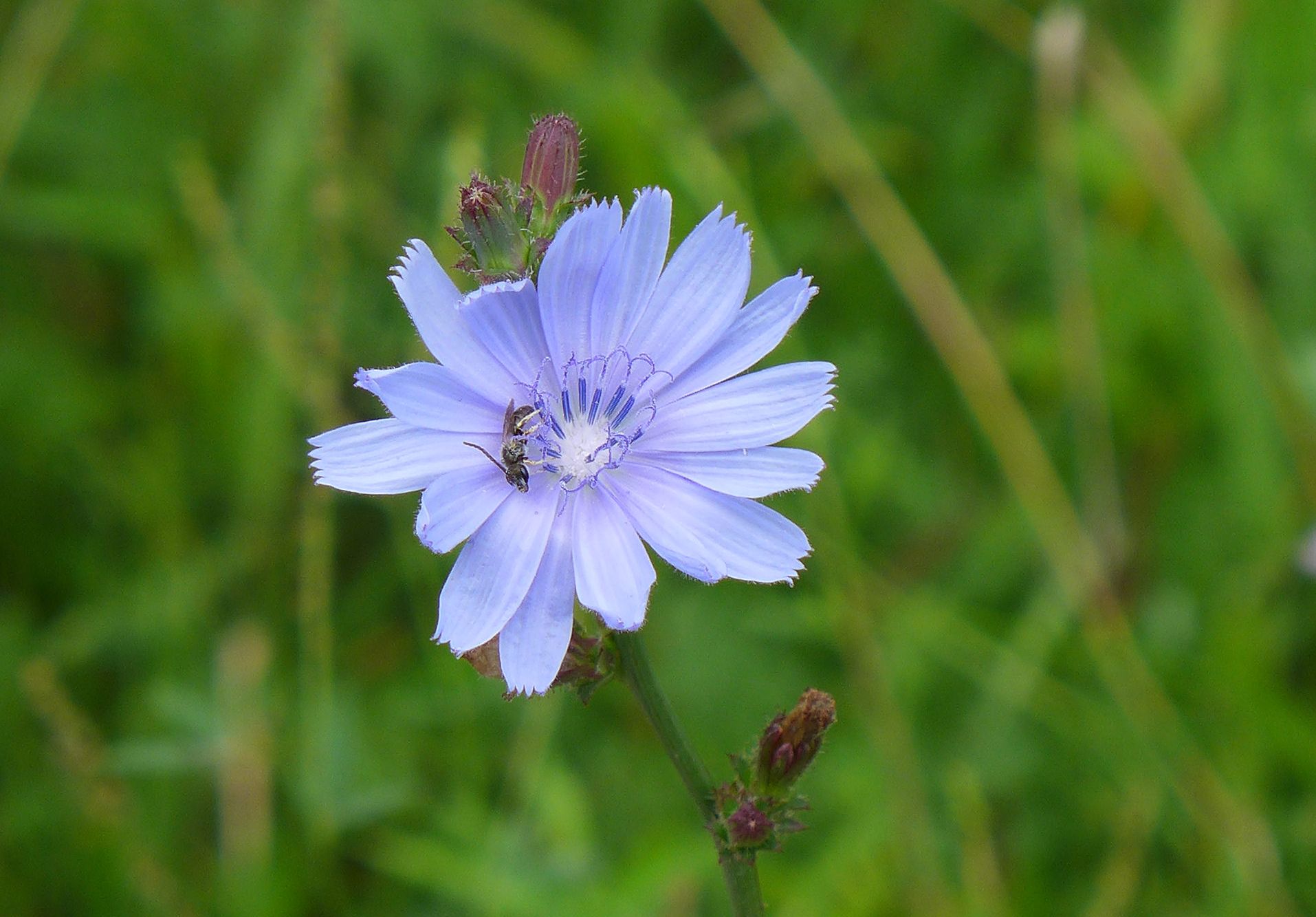
For months we’ve been seeing chicory’s daisy-like blue flowers blooming by the roads and trails.
Chicory (Cichorium intybus) is native to Europe where it’s been cultivated as food for people and forage for livestock since at least Roman times. Settlers brought it to North America for food and it soon became a weed. In Colorado it’s listed as a noxious weed.
We eat chicory’s leaves, buds and roots but we call it by different names depending on its purpose. The varieties grown for leaves and buds are called endive, radicchio, Belgian endive, sugarloaf (and others). The variety grown for roots is called chicory. Just to confuse things, in the U.S. chicory’s close relative curly endive (Cichorium endivia) is sometimes called chicory.
Chicory roots are minced, roasted, ground, and then blended with coffee or brewed as a substitute. Since chicory has no caffeine, it’s a good coffee substitute if you like the taste. Otherwise people drink it straight when they can’t get coffee, usually during economic crises and wars such as the Great Depression and World War II. New Orleans still prefers chicory-blend coffee, a tradition since the Civil War.

If you eat chicory from the wild you’ll find it’s bitter compared to cultivated varieties. Remember, don’t forage by busy roads. Those plants absorb pollution from vehicles and residue from pesticide and defoliant sprays.
Read more about chicory, foraging and brewing at these links:
- How to Make Chicory Coffee
- Foraging Tips Dos And Dont’s
- Chicory and Endive
- This Is What Chicory Is and Why It’s In Your Coffee
(chicory photo by Kate St. John. coffee cup from Wikimedia Commons; click on the caption to see the original)
I knew about chicory and coffee, but I had no idea that endive and radicchio were actually chicory (I love radicchio!). Thanks for always bringing new knowledge into our lives Kate.